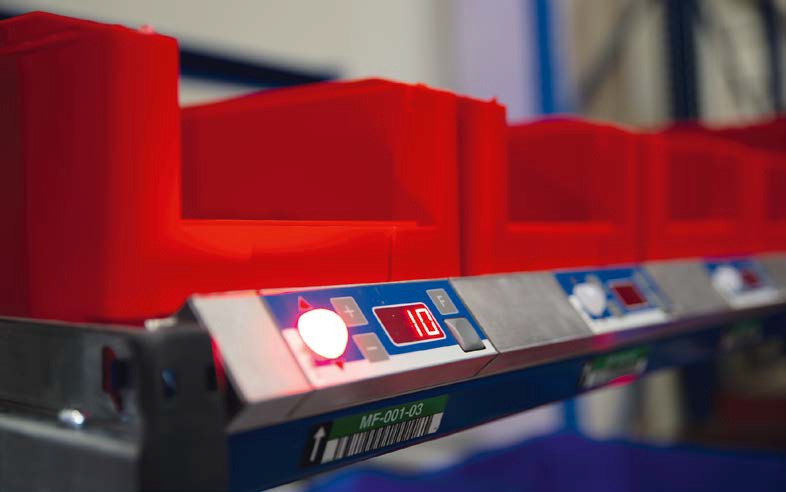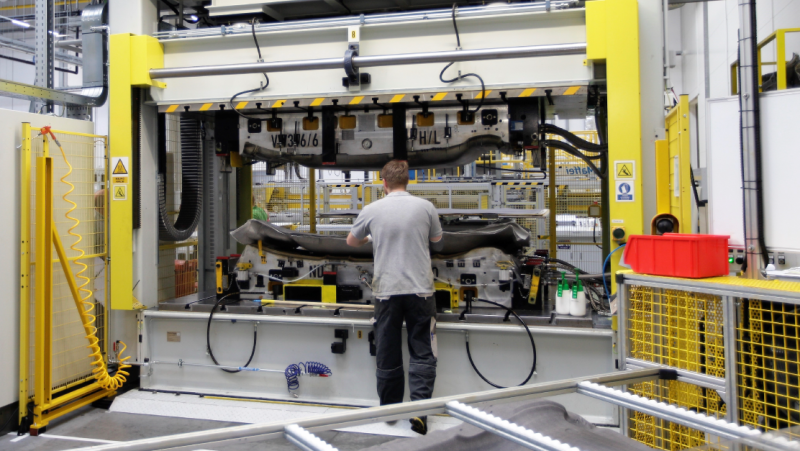Vertical Lift Storage: When the Component Comes to the Operator
- Digital Factory
- Article
World’s gone mad, what was enough yesterday, is not enough today. Production batches are getting smaller and the profitability limits of yesterday are being reconsidered today. The method includes automatic lift warehouse systems connected to WMS.
Assortment of production is growing, and the number of various components is increased. Production areas are full, and smaller stock of each part in the production requires more frequent replenishment. All these aspects of the production significantly impact the warehouses, too. Faster, more often, and with lower quantities. Wider assortment of parts requires more space.
When adding up all these limitations, increase in number of kilometres walked is detected against number of parts prepared for the production. All this in a situation when decrease of workers is required in the logistics. But there is a solution for this situation. Ironically, it can be offered by companies working in the goods distribution area, where the growing market of e-shops made them to modernize and rework the way of picking and distributing goods.
Fifty warehouse operators yesterday, five today
Similarly to the manufacturing companies, the distribution has also been affected by the growing diversity of goods, and at the same time, by the requirement of what is not sent today, has been sent too late. The key area for the fast order dispatch assurance is the picking zone. Goods must be available there. One of the key parameters has appeared to be the number of kilometres walked, i.e. the amount of non-productive time. This is the time when the warehouse operator is not picking, but only moving to the next product. Therefore, the picking principle was turned up side down, the warehouse operator works only in a small area, and the product is coming to the operator. The basis is an automatic lift warehouse system, using racks with goods located one above another up to the height of the hall. When needed, rack with required product automatically goes down to ergonomic level of the operator, and after picking, the lift takes it back to an unavailable height to the ceiling.
There is nothing new with the lifting system principle, and number of manufacturing companies has been resolving their warehouse areas for tiny parts with it for years already. The major change is the present demand for speed. The warehouse operator operates three and more lifting systems at a time. While picking from one rack, the other one is coming closer, and the last departing. Another significant increase in performance is reached with picking of greater amount of orders at a time. Ten orders at a time is a usual number. Automatic conveyors are used to transport the picked goods, transporting full boxes with goods away, and transporting empty boxes in, or full in order to replenish the lift racks. A proven accessory is a light navigation of the operator (Pick-To-Light). The operator finds quickly the light indicated position with the goods being picked, and places it correctly to a light indicated target box. In this way, speed and minimum error rate is provided.
System management with WMS
This way of warehousing and picking has been proven as the most effective for goods with medium and lower turnover, typically B and C for ABCD assortment division. Goods with the highest turnover are kept being stored in gradient racks, and the D type goods remains in remote locations with less availability. Besides the effectiveness reached, when performance can easily be increased up to ten times, required flexibility can also be gained. Using suitable arrangement, performance in peaks can easily be increased, and during “idle” period, operation can be assured with minimum workers. Such system is certainly managed by an information system. Since they are warehouses, most often the system is the WMS (Warehouse Management System).
Share article
Top stories from logistics, production and IT.
Subscribe to Aimtec Insights
By registering, you agree to the processing of your personal data by Aimtec as described in the Privacy policy.
Get top stories and articles
from Logistics, Production and IT.
Subscribe to Aimtec Insights
By registering, you agree to the processing of your personal data by Aimtec as described in the Privacy policy.







